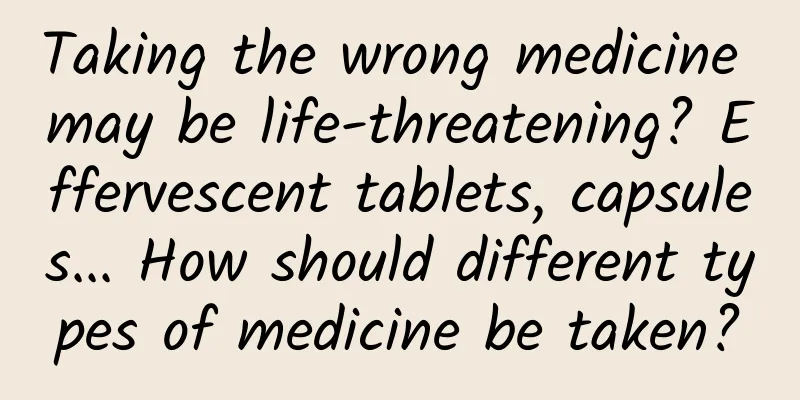"Affirmation" for vitamin D! People with vitamin D deficiency will have 229 genes affected

|
Vitamins are a type of nutrients that are essential for maintaining human health. They play an important role in regulating body metabolism and maintaining normal physiological functions. A survey on vitamin D levels in adults over 18 years old in East China showed that the vitamin D deficiency rate was as high as 80.3%, and the vitamin D content in women's blood was significantly lower than that in men. Recently, a study in Nature Reviews: Endocrinology deeply summarized the data from randomized controlled trials and Mendelian randomization studies from 2017 to 2020, discussed the role and impact of vitamin D in common diseases, and reminded everyone not to take vitamin D deficiency lightly. "Affirmation" and "questioning" always accompany vitamin D Vitamin D is an essential fat-soluble vitamin for the human body. There are at least 10 known types of vitamin D, the most important of which are vitamin D3 and vitamin D2. A “yes” to vitamin D The discovery of vitamin D is a sign of victory in the fight against rickets and osteomalacia. As early as the 19th century, humans discovered that cod liver oil and phototherapy played an important role in the treatment of rickets, so it is generally believed that vitamin D can have a positive impact on bone health and promote the absorption of calcium by small intestinal mucosal cells. Since then, research has continued to emerge showing that vitamin D can reduce the risk of cancer, protect blood vessels, prevent diabetes, and protect the liver and kidneys. A study from the University of Oxford in the UK found that vitamin D can directly affect the activity of 229 human genes. Vitamin D deficiency may increase the risk of a series of immune diseases, even dementia. Doubts about Vitamin D During the COVID-19 pandemic, the positive effect of vitamin D on the recovery of COVID-19 patients has been one of the hot topics. However, while vitamin D is highly favored, it has also been caught up in a wave of doubts. As early as 2013, a meta-study published in The Lancet showed that vitamin D supplementation has little effect on preventing osteoporosis in healthy adults. In 2018, a randomized controlled trial involving 26,000 people published in the New England Journal showed that vitamin D supplementation was no different from placebo in reducing the incidence and mortality of cardiovascular events, preventing cancer (breast cancer, prostate cancer or colorectal cancer) and reducing cancer mortality. In 2019, the Journal of the American Medical Association published a study involving more than 80,000 patients with eight years of follow-up, stating that vitamin D supplementation does not prevent the occurrence of heart disease, cerebral infarction, and malignant tumors. A recent study from the Cleveland Clinic in the United States stated that oral vitamin D and calcium supplements can increase the risk of all-cause mortality in patients with mild and moderate atherosclerosis by 38%. Three types of disease prevention effects are highly recognized Compared with the above studies, the study in Nature Reviews: Endocrinology reviewed various results from 2017 to 2020 and gave a relatively fair evaluation summary: Overall, mortality may be increased in people with poor vitamin D status, but it is uncertain whether vitamin D supplementation reduces mortality. In addition, the existing research evidence cannot support the claim that "vitamin D supplementation can prevent type 2 diabetes"; although the association between vitamin D supplementation and cancer incidence or mortality cannot be ruled out, it is difficult to provide sufficient verification; even if studies have found that vitamin D supplementation may be beneficial to blood pressure, the scale is relatively small, and this association may be affected by multiple factors, such as diet and lifestyle. The study also clearly affirmed the role of vitamin D in the following three types of diseases: Musculoskeletal disorders The review analysis showed that vitamin D supplementation is unlikely to reduce fracture risk or improve bone mass. However, if calcium and vitamin D supplementation can be started before osteoporosis occurs or at a relatively early stage, the incidence of fractures (except vertebrae) due to osteoporosis in the elderly can be reduced by about 20%. This is especially true for those with poor vitamin D status and insufficient calcium intake. However, researchers remind that the daily vitamin D intake of all high-risk groups or elderly people with vitamin D deficiency should not exceed 4000 international units (100 micrograms). But doctors say that excessive intake rarely occurs in daily life, so there is no need to worry. Immune system disorders The review pointed out that low vitamin D concentration is associated with an increased risk of autoimmune diseases, such as multiple sclerosis and inflammatory bowel disease, and there is strong supporting evidence in particular for an increased risk of multiple sclerosis. Target tissues and actions of the vitamin D endocrine system A study conducted by a Harvard University research team pointed out: For people who cannot get sun exposure and eat fish every day, vitamin D supplementation alone can reduce the risk of autoimmune diseases by 32%, and the longer the supplementation time, the more obvious the effect; Participants with a lower body mass index had a stronger protective effect against autoimmune diseases when taking vitamin D supplements. Respiratory diseases The review shows that more and more studies believe that the lungs are also an important target tissue of vitamin D, and vitamin D deficiency is associated with several inflammatory lung diseases or poor lung function. Some studies have pointed out that supplementing patients with severe vitamin D deficiency with vitamin D can reduce acute upper respiratory tract infections, moderately improve lung function, and is beneficial for patients with lung diseases such as chronic obstructive pulmonary disease and asthma. Other research analyses have also found that daily or weekly vitamin D supplementation may be effective in preventing acute respiratory infections, but intermittent supplementation (once a month or even less frequently) is ineffective. Who is prone to vitamin D deficiency? Doctors say that there are generally four reasons for vitamin D deficiency: Skin color and race. Melanin in the skin affects the skin's absorption of ultraviolet rays, so it is more difficult for Asians to synthesize vitamin D than Caucasians. Latitude. People living in high-latitude areas, such as residents of cold northern my country, have more serious vitamin D deficiency than residents in the south. Age. As we age, the skin's ability to synthesize vitamin D decreases, and the synthesis capacity of people over 70 is only 1/4 of that of young people. Personal environmental factors: People who work night shifts for a long time or sit indoors for a long time without time to go out are relatively prone to vitamin D deficiency. It should be noted that some women's overly strict sun protection, such as carrying an umbrella when going out and applying thick sunscreen all year round, will reduce the opportunity to synthesize vitamin D through sun exposure. People who diet for a long time or do not eat enough animal food will get very little vitamin D through their diet. People who are prone to vitamin D deficiency also include children in their growth and development period and pregnant women. Frequent inflammation or infection that is difficult to heal, constant fatigue, joint or muscle pain, weakness in the limbs, etc. are all manifestations of vitamin D deficiency. Generally, blood can be drawn to test "serum 25-hydroxyvitamin D", and the ideal range is around 50~125 nanomoles/liter. There are three main ways to supplement The recommended daily intake of vitamin D for Chinese adults is 10 micrograms per day, and 15 micrograms per day for people over 65 years old. "First in the kitchen, then in the pharmacy." There are three options for vitamin D supplementation: Sunbathing 80% of the vitamin D in the human body needs to be synthesized by the skin after sun exposure. The best way to supplement vitamin D is to sunbathe. The recommended daily sun exposure time for adults is 30 minutes to 1 hour. Infants and children have delicate skin, so the time can be shortened to 15 to 30 minutes; The ability of the elderly to synthesize vitamin D is reduced, so the time can be extended appropriately, but they should avoid excessive exposure to the sun. When sunbathing, you should expose your forearms, hands, calves and other parts. If you sunbathe through glass, the ultraviolet transmittance is insufficient, which is not conducive to the body's synthesis of vitamin D. It is best to go to an outdoor environment with good greenery. Supplementation through food Foods such as animal liver, whole milk, egg yolk, fatty fish, and fungi are also rich in vitamin D. People also often get it by eating fish oil rich in vitamin D, vitamin D-fortified milk, vitamin D nutritional supplements, etc. Taking vitamin D supplements Vitamin D synthesized by the skin through sunlight is self-limiting and generally does not overdose, but overdose is possible by taking supplements. To meet the body's needs, children, pregnant women, the elderly, etc. can take vitamin D supplements under the guidance of a doctor. It should be noted that vitamin D should not be over-supplemented. Because it is a fat-soluble vitamin, it is more difficult to excrete through urine compared to the familiar water-soluble vitamin C and B vitamins. If it is stored excessively in the liver, it may bring health risks. |
<<: Thrombosthenia with persistent bleeding
>>: "Lying flat" has more disadvantages than advantages
Recommend
January “scientific” rumor list: Will the new coronavirus vaccine change human genes?
The January "scientific" rumor list is ...
The benefits of putting ginger in the belly button
The belly button is a very important acupuncture ...
What is the meaning of Lan Wangji stealing Teng Zijing's chicken? Why do we say that Lan Wangji stole Teng Zijing's chicken?
The Joy of Life, starring Li Qin and Zhang Ruoyun...
What is the hard part in the uterus?
Women can only give birth to children if they hav...
How long is the safe period after menstruation?
Generally speaking, women are not likely to get p...
Female left lower abdomen pain when lying down
There have always been some diseases in daily lif...
Why does bleeding occur during intercourse one month after having an IUD inserted?
After the IUD insertion surgery, women must go ho...
How much does it cost for pregnant women to check their sugar levels?
Sugar screening is a test that expectant mothers ...
How should women get rid of wrinkles?
Many women who love beauty have a problem, that i...
Can you get pregnant without your period?
In fact, not having a period does not mean that y...
What are the imaging characteristics of a magnifying glass? Is the principle of a magnifying glass based on the refraction of light?
Magnifying glasses are widely used in people'...
What should be checked for the ring?
Women need to consider "the right time, the ...
Anti-inflammatory and anti-acne soup, detox and anti-inflammatory recipes revealed
Acne is probably the natural enemy of all female ...
Are fibroids in the breast serious?
Breast fibroma is a common tumor in women. The tu...









